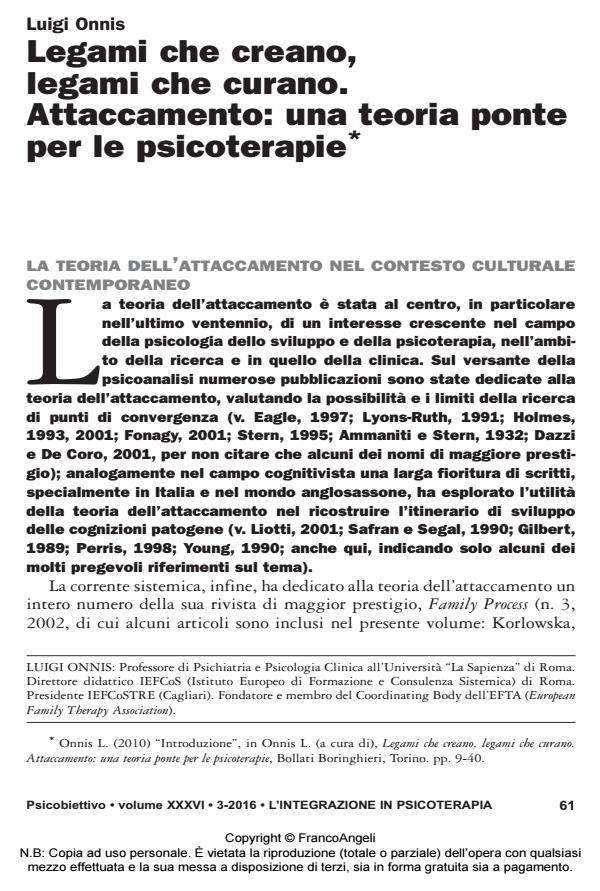Connections that create, connections that heal. attachment: a bridge theory for psychotherapy
Journal title PSICOBIETTIVO
Author/s Luigi Onnis
Publishing Year 2016 Issue 2016/3
Language Italian Pages 30 P. 61-90 File size 154 KB
DOI 10.3280/PSOB2016-003004
DOI is like a bar code for intellectual property: to have more infomation
click here
Below, you can see the article first page
If you want to buy this article in PDF format, you can do it, following the instructions to buy download credits

FrancoAngeli is member of Publishers International Linking Association, Inc (PILA), a not-for-profit association which run the CrossRef service enabling links to and from online scholarly content.
The paper aims at exploring the current dimension of the Attachment Theory in the contemporary cultural context. The author highlights the deeper aspects shared by the attachment theory with psychoanalysis, cognitivism and systemic orientation. With regard to the latter, it highlights the common enhancement of experiences and "real" relationships as a matrix of psychological development of the child. It emerges, with respect to the attachment theory, a vision of this as a "bridge" between the different addresses. In this sense it is activated as a bridge towards multiple directions, primarly towards the inside of each model, stimulating an original research of connections between "external reality" and "inner world"; then it becomes a bridge built between different psychotherapist models soliciting research and intersections.
Keywords: Theory of Attachment; Intersubjectivity; Bridge; Self-Healing of the Psyche.
Luigi Onnis, Legami che creano, legami che curano. Attaccamento: una teoria ponte per le psicoterapie in "PSICOBIETTIVO" 3/2016, pp 61-90, DOI: 10.3280/PSOB2016-003004